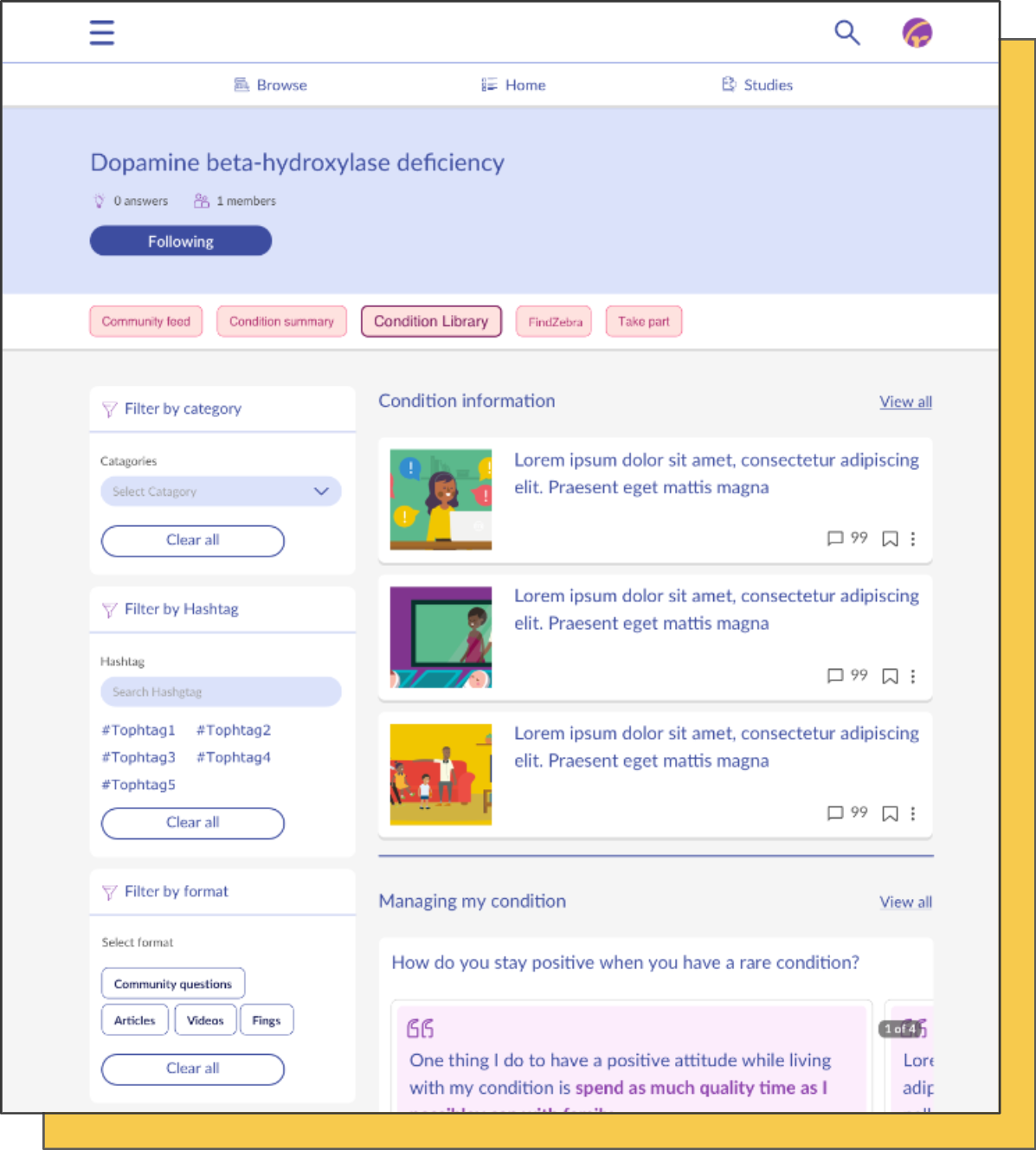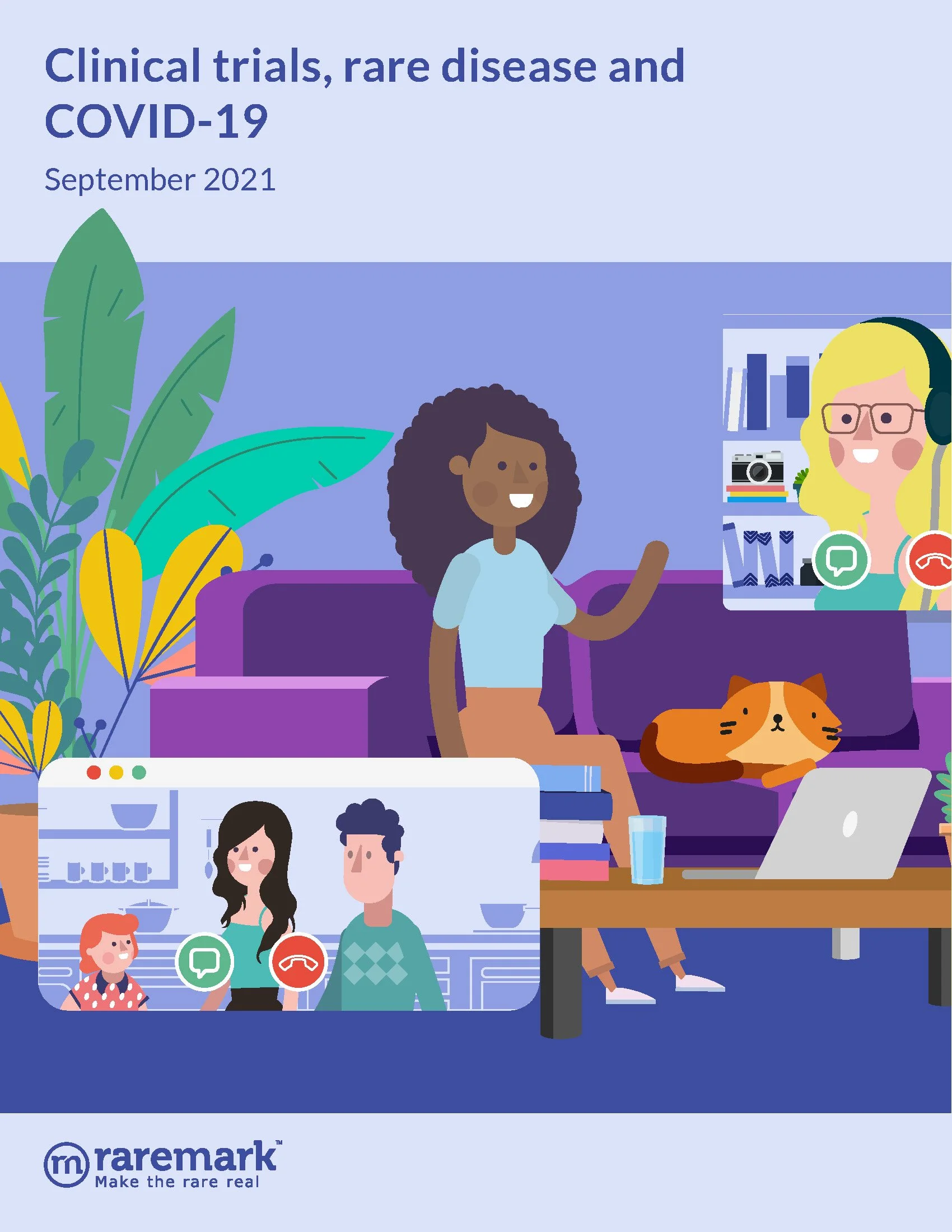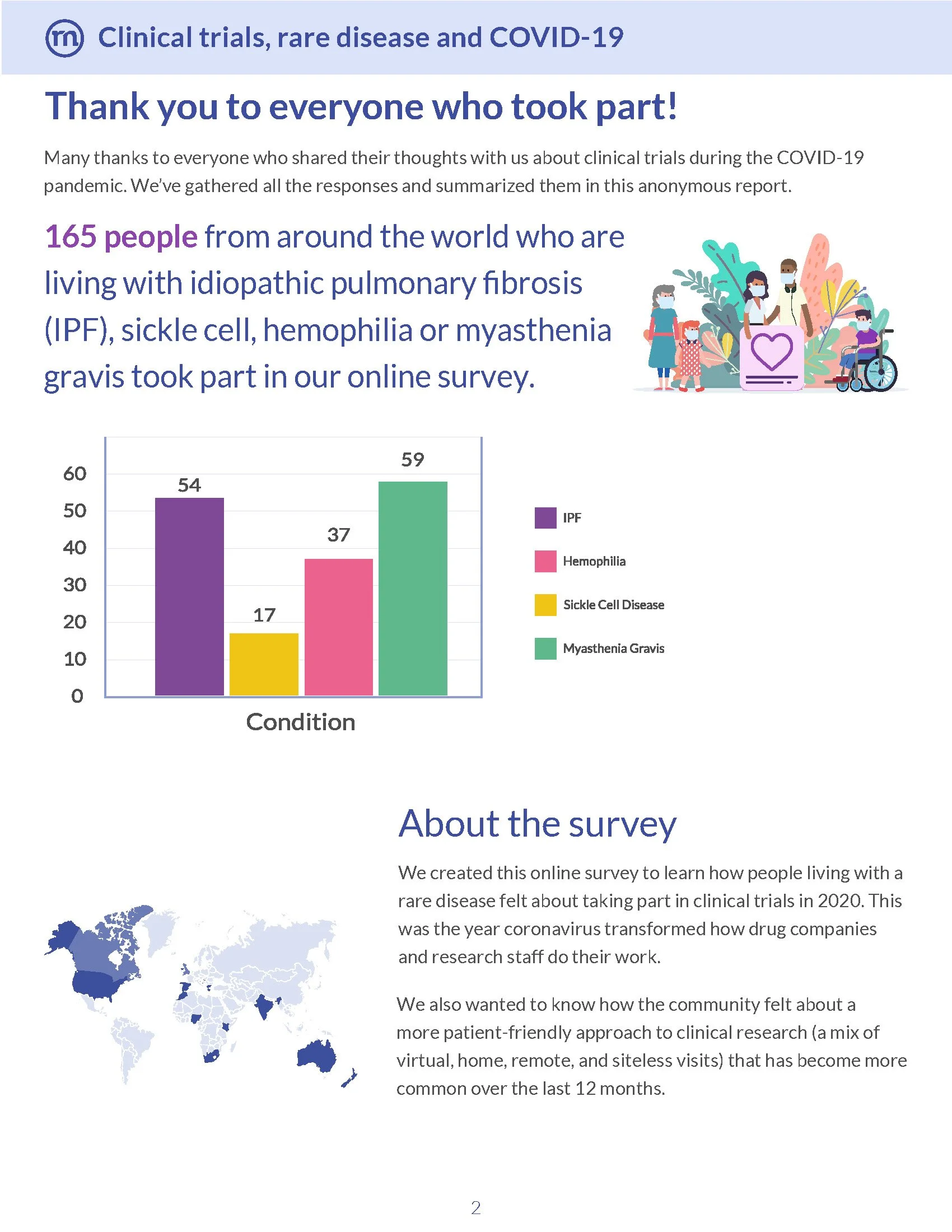/Raremark
community
About
Raremark served as a collection of online communities designed for people with rare diseases. From a user perspective, it provides a platform for individuals seeking information to better understand their or their loved one's condition and offers opportunities for those who wish to contribute to research through clinical trials and crowdsourcing information.
From an industry perspective, Raremark’s goal was to reduce the time it takes for treatments to reach the market.
The problem
Scalability vs. Quality - In its infancy Raremark was little more than a collection of medical journals that were rewritten so that you could understand them with little to no medical knowledge. The new platform would need to and with over 700 rare diseases, the challenge was to provide a scalable solution that maintains high-quality, reliable information and support.
User Skepticism - Initial patient interviews revealed that many users were skeptical due to the prevalence of scam sites, highlighting the need to build trust and credibility.
Disabilities - Many of the conditions we supported present symptoms including reduced motor functions and visability which would make navigating the site challenging for the user if not handled carefully.
The goals
Scalability - Develop a platform that can accommodate a wide range of rare diseases without compromising on the quality of information and user experience.
Building Trust - Create a trustworthy environment that addresses user skepticism and establishes Raremark as a credible source of information.
Accessibility - Create a platform that is engaging and of value for everyone, supporting all disabilities and more importantly designing the copy in such a way that you don’t need a doctorate to understand it. Raremark is for everybody.
The process
Comprehensive Research:
Through extensive user interviews to understand the needs of users with different rare diseases, we identified several core drives behind the user’s motivation. The main two that we focused on were:
“Find my tribe“ - many of the users were looking to engage and interact with someone who was going through a similar experience to them whether it was to share ways to improve quality of life or just to hear about other people's experiences.
“Jobs to be done“ - research in the form of emotional mapping and user journey mapping helped us evaluate and map out what stage the user was in their patient journey and aided us in surfacing the right content at the user’s stage of diagnosis. Users early on in their diagnosis would more likely be looking for information on their condition whereas someone further along in their journey would be more eager to contribute to medical research.
Raremark condition space
Community feed - this is where we surfaced the latest posts, content, and interactions and would be a continuous feed. This is also where the user could share content and ask questions to other members of the same condition space.
The condition summary - users can find more general information on their condition. The information surfaced on this page is pulled from Orphanet but also continuously updated by members within the condition space through user contributions.
FindZebra - because there are over 7000 rare conditions in order for three to be a condition space for each with at least some content for new users we partnered with FindZebra who enabled us to pull articles and content for each specific condition.
Condition library - this is where the content is stored long term in an easier to navigate fashion. From here the user can filter content on the left hand side or “discover” content as it appears in categorised sections in the main body of the page.
Take part - this is where activities such as questions, surveys, and studies are presented to the user. The progress and results of which are accessible to the user on the main feed.
FINGS
In order to facilitate community engagement, we introduced FINGs (Fill In the Gaps). This initiative empowered patients and caregivers to share their experiences, providing valuable insights.
Feeding back data to the community
In order to further transparency and help inform members of each community we routinely fed back our findings in the form of survey highlights reports and infographics.
Through user research, we identified several day-to-day issues that patients were going through. For example, patients suffering from sickle cell attending an ER when in crisis being accused of “drug-seeking behavior “. To aid communication with medical professionals we created a tool for patients to fill in cataloging previous events.
User-Centric Design:
We implemented a user-centric design process, incorporating feedback from patient interviews and usability testing. This dictated everything from layout, copy size, colour pallet, reading age, and making the code on the platform compatible with screen readers.
We developed intuitive navigation and user-friendly interfaces tailored to the needs of different user groups.
This research aided in creating our design language system. Using the atomic design framework we were able to template and standardise design across the whole platform quickly. which was routinely evaluated and updated in monthly “health inspections”.
We also took a similar approach in building an illustration library creating resources for backgrounds, characters, and objects so members of the design and marketing team could quickly and effectively produce illustrations representing patients and carers within each community.
Outcome
Working at Raremark highlighted the importance of leveraging user-centric design, balancing scalability with quality, building trust, strategic partnerships, and clear communication, Raremark was able to effectively expand its reach and impact while maintaining the high standards its users expect.





















